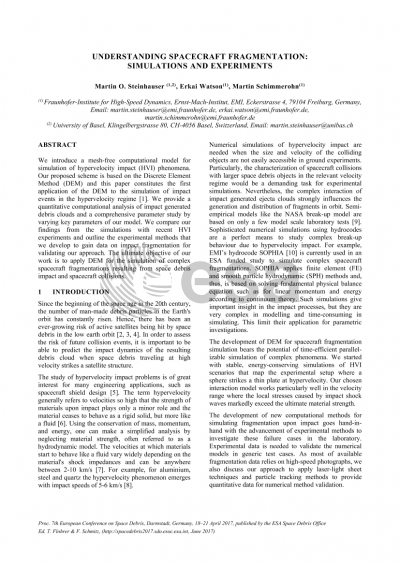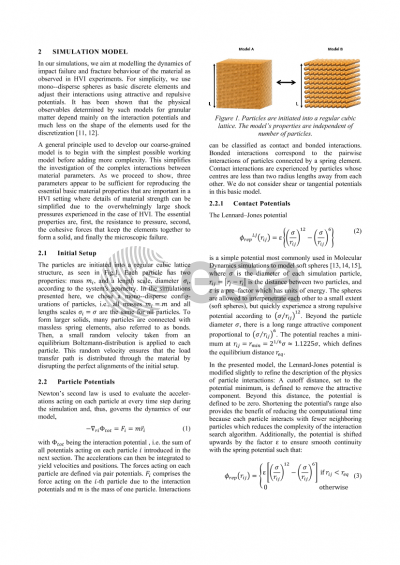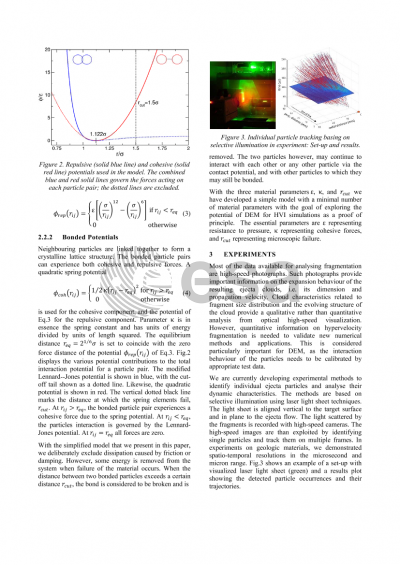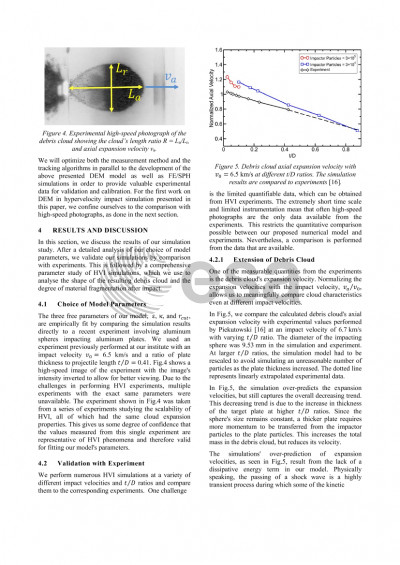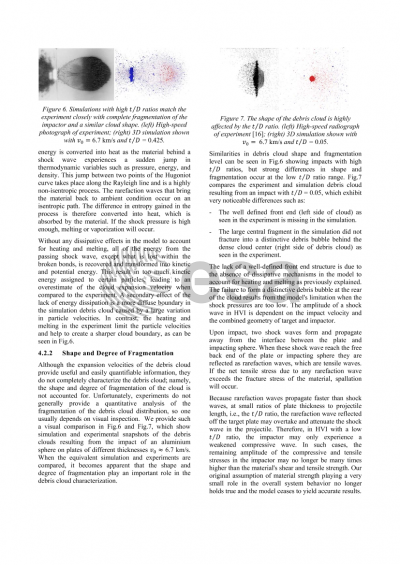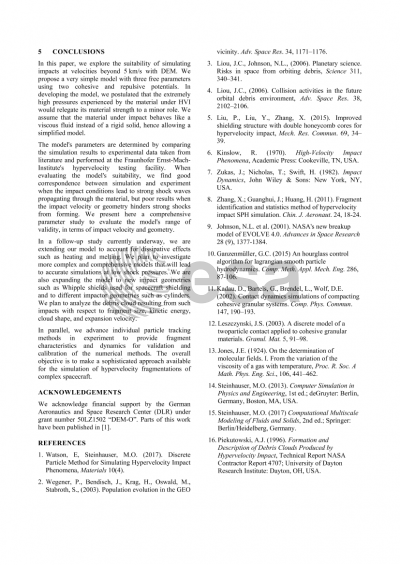Document details

Abstract
In our paper, we introduce a mesh-free computational model for simulation of hypervelocity impact (HVI) phenomena. Our proposed scheme is based on the Discrete Element Method (DEM) and we present the results of a systematic numerical study on HVI of granular solids. For modeling the solids, we use spherical particles that interact with each other via potentials. In our numerical investigations, we are particularly interested in the dynamics of material fragmentation upon impact. We model a typical HVI geometry where a sphere strikes a thin plate and investigate in detail the properties of the resulting debris cloud. Our paper constitutes the first application of the DEM method to the modeling and simulating of impact events in the hypervelocity regime. We provide a quantitative computational analysis of the resulting debris cloud caused by impact and a comprehensive parameter study by varying key parameters of our model. We compare our findings from the simulations with recent HVI experiments performed at our institute.
Our findings for the numerical simulations are that the DEM method leads to very stable, energy-conserving simulations of HVI scenarios that map the experimental setup where a sphere strikes a thin plate at hypervelocity speed. Our chosen interaction model works particularly well in the velocity range where the local stresses caused by impact shock waves markedly exceed the ultimate material strength.
The development of new computational methods for simulating fragmentation upon impact goes hand-in-hand with the advancement of experimental methods to investigate these failure cases in the laboratory. While numerical simulations allow studying complex collisions that are not accessible by ground testing, experimental data is needed to validate the numerical models in generic test cases. Here, novel laser light sheet techniques provide an adequate means to track impact-ejected fragments. The fragments are illuminated by the laser light sheet and recorded by high-speed cameras for optical analysis. Spatio-temporal resolution of about 10 ?m and 3 ?s has been recently demonstrated in proof-of-concept
experiments (5 mm Al sphere impacting sandstone with 1.7 km/s) at Fraunhofer EMI. More experiments at higher velocities are being planned.
Preview
